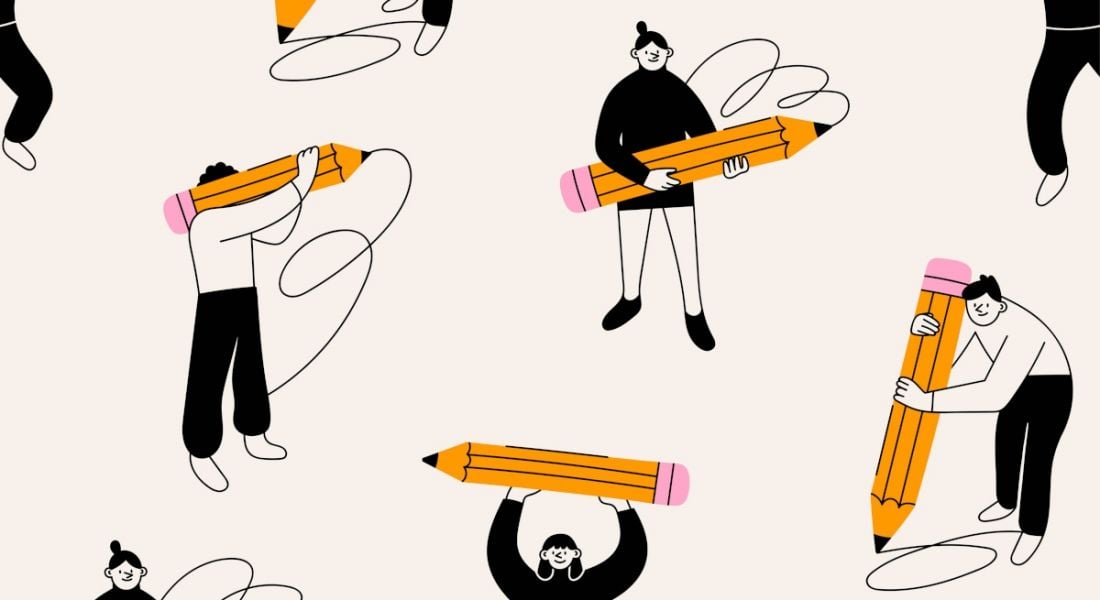Toastmasters’ member Ged Byrne spotlights generative AI’s eerie. hyperbolic writing and explains that the best way to steal its thunder is to rely on your own voice.
Just one year after its launch, ChatGPT was having an impact on careers, with a Deloitte study showing that more than 300,000 workers were already using the technology. Now, AI tools like Microsoft’s Co-Pilot and Google’s Duet are promising to transform the productivity of writers, allowing them to generate more output than ever before. One study shows writers achieving a 40pc saving in time with an 18pc quality improvement. Mastering these tools is an essential skill for future writers.
But it is important to be careful. In the pursuit of the maximum efficiency promised by these clever new technologies, you can easily forget your most essential asset: your humanity. There is already too much text being published for everyone to read. As the quantity of AI-generated content increases, the value of human connection will become more precious.
That is becoming a challenge. For nearly seventy years, the goal of AI researchers was to win the imitation game defined by Alan Turing. To win, the computer must be able to generate text that could pass as something written by a human being. Now that they have succeeded, the impetus is on us humans to make it clear that our content must have involved a real, live human.
Your teachers probably taught you to write in a formal, professional style. Now those lessons need to be unlearned. The anonymous tone of corporate and academic writing is easily replicated by AI’s large language models. The real way in which humans communicate is more subtle, nuanced and playful. It is appealing to the human reader and difficult for the machine to replicate.
The imitation game
Let’s play the imitation game. In a recent Silicon Republic interview, a data scientist was asked “What inspired you to become a researcher?” Here are two responses, one from the person and the other from ChatGPT.
“What inspired me to become a researcher? At 16, JRR Tolkien’s enchanting worlds captivated me, sparking a love for storytelling and fantasy. Coupled with an insatiable curiosity and a tendency to easily bore of the mundane, I found my calling in research, driven by the thrill of discovery and the endless pursuit of knowledge, be it in ancient texts, the mysteries of the universe, or the depths of the human mind.”
“It was JRR Tolkien who put this romantic image of a scholar studying ancient manuscripts and deciphering obscure texts in my head. I first read his essays and letters when I was around 16, I think. However, I’ve always been curious and easily bored. As a child, I was constantly posing questions and trying to find answers, delving into a different topic every other day just to keep myself entertained. Then I learned that it’s more or less what researchers do!”
Which one was written by a real human being? The first one seems very emotional as it talks about love being sparked and the thrill of discovery. The problem is that the emotion lacks credibility. Because ChatGPT has never experienced an emotion, it tends towards the hyperbolic.
Every human being has a story to tell, and they tend to be told in an understated way. There is something clearly human in the dry humour of the second answer and the unexpected, ironic twist where the traits normally considered undesirable turn out to be assets for the researcher.
Let’s play another round. This time it is with the introduction to a recent article, 6 STEM career and learning opportunities to consider this spring. Which one was written by Silicon Republic’s very human careers reporter and which one was generated by AI?
“March into, um, March with some new education programmes and apprenticeships that will hopefully see you on your way to a big career boost. It is hard to believe we are already almost at the end of the first quarter of 2024. Apologies in advance if us pointing that out makes you want to tear your hair out. If it’s any consolation, there’s a lot of us in the same boat.”
“Spring is here, and with it, a bouquet of exciting opportunities blossoms in the world of STEM! Whether you’re a seasoned pro or a curious learner, join us as we explore six captivating career and learning options waiting to be embraced this season. From cutting-edge tech to thrilling discoveries, let’s dive into the vibrant world of science, technology, engineering and mathematics that awaits!”
Am I human?
Large language models are trained to learn in what words and phrases are most likely to follow one another. This is why they tend towards the generic and rarely say something unexpected. Adding a random element can result in something very strange rather than surprising. Once again, credibility is lost as the AI turns to hyperbole. The human writer is more restrained, deliberately undermining their pun with a playful ‘um’ and cheekily highlighting the relatable, human response to discovering that a quarter of the year has already passed us by.
Next time you are about to publish something, try playing the imitation game yourself. Compare your writing with something AI-generated and ask yourself: ‘How have I shown that I am human?’
By Ged Byrne
Ged Byrne is a member of Toastmasters International, a not-for-profit organisation that has provided communication and leadership skills since 1924 through a worldwide network of clubs.
Find out how emerging tech trends are transforming tomorrow with our new podcast, Future Human: The Series. Listen now on Spotify, on Apple or wherever you get your podcasts.





